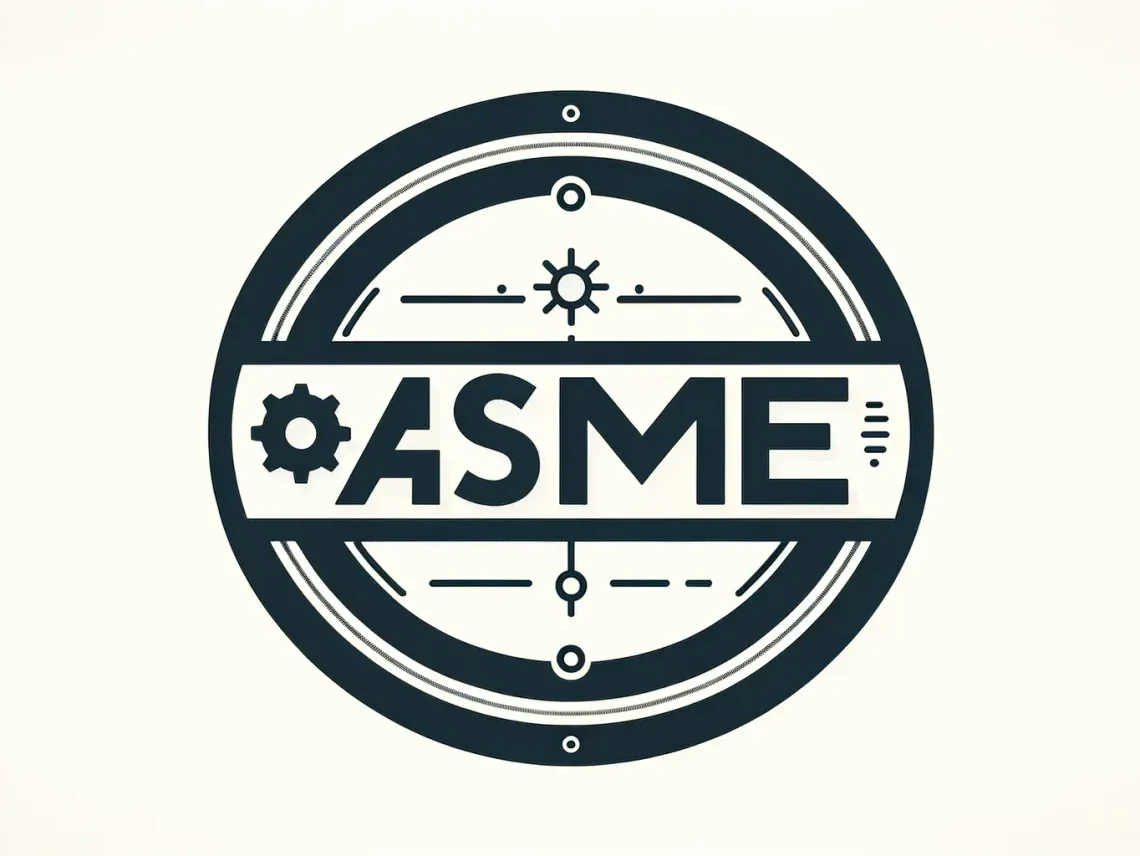Electrical Engineering focuses on the study and application of electricity and electromagnetism. Electronics Engineering is a subset that deals with electronic circuits and devices.
Electrical Engineering encompasses a broad area dealing with energy transmission and generation, ensuring that societies have a steady supply of electrical power. It also involves creating the infrastructure required for electricity distribution and the design of large-scale electrical systems. On the other hand, Electronics Engineering is more concerned with designing electronic circuits, semiconductors, and the integrated circuits found in computers, mobile phones, and other modern technology.
Both fields are essential yet distinct, with Electrical Engineers working on systems such as power stations and grid infrastructure, while Electronics Engineers contribute to advancements in telecommunications, computing, and consumer electronics. Their collaboration is pivotal in developing and maintaining contemporary electrical and electronic technologies that drive the modern world.
Distinguishing Electrical And Electronics Engineering
Core Principles Of Electrical Engineering
Electrical engineering is the older sibling in the family, focusing on the heavy-duty aspects of power and machinery. It’s about generating, transmitting, and converting electricity to make cities glow and industries run.- High-voltage systems: It deals with power generation plants and grid infrastructure.
- Motors and generators: These are the heartbeats of countless industrial operations.
- Circuit theory and transformers: These staples manage and modify electric power for various uses.
Fundamentals Of Electronics Engineering
In contrast, electronics engineering is all about the small-scale wonders. It focuses on circuits you can’t see but are essential for devices to think and act.- Semiconductors: They’re the building blocks for chips and micro-electronic devices.
- Digital systems: These are the brains within gadgets that process data in ones and zeroes.
- Integrated circuits: Packed with countless components, they’re the miracles of miniaturization.

Credit: www.pitsdatarecovery.net
Historical Evolution
The Origins Of Electrical Engineering
Electrical Engineering’s roots trace back to the 19th century. Invention of the telegraph and the telephone signaled the start. Scientists like Michael Faraday and James Clerk Maxwell laid the groundwork. They discovered laws of electromagnetism. Soon, electric power became essential for industries. The field focused on generating and distributing power.Birth Of Electronics Engineering
Electronics Engineering emerged in the 20th century. The invention of the diode and the transistor marked its beginning. These tiny components allowed for the manipulation of electrical signals. The first electronic devices were born. Radios and TVs became household items. The field expanded to include computers and microprocessors. Small signals became a big part of our lives. Look at the table below to see the key milestones:| Year | Discovery/Invention | Field |
|---|---|---|
| 1831 | Faraday’s Law of Induction | Electrical |
| 1876 | Telephone by Alexander Graham Bell | Electrical |
| 1901 | First Trans-Atlantic Wireless Telegraph | Electronics |
| 1947 | Invention of the Transistor | Electronics |
| 1971 | First Microprocessor | Electronics |
Educational Pathways
Curriculum Comparison
Understanding the coursework is crucial when choosing your engineering path. Electrical Engineering (EE) often focuses on heavy current applications. Electronics Engineering (ECE), on the other hand, deals with light current and digital systems.| Electrical Engineering | Electronics Engineering |
|---|---|
| Circuits and Systems | Digital Logic Design |
| Electromagnetics | Integrated Circuits |
| Power Systems | Embedded Systems |
| Control Systems | Communication Theory |
Specializations And Electives
Specializing allows students to sharpen their expertise in specific areas. EE might emphasize energy systems or automation, while ECE may focus on wireless communication or robotics. Electrical Engineering Specializations:- Renewable Energy Systems
- Power Generation and Distribution
- Automation and Control Engineering
- Robotics and Automation
- Mobile and Wireless Communication
- Signal Processing
Material Focus And Applications
Conductors, Insulators, And Semiconductors
Electrical Engineering heavily relies on conductors. Conductors, like copper and aluminum, let electricity flow easily. In contrast, Electronics Engineering often deals with semiconductors. Materials like silicon are fundamental in making transistors, diodes, and integrated circuits. Both fields use insulators, such as rubber and glass, to keep electricity contained. Insulators prevent unwanted flows of current.From Power Systems To Integrated Circuits
The application of these materials defines the path of both engineering practices. Electrical Engineers build power systems. These include wiring in buildings, power plants, and the grid. Electronics Engineers work on a smaller scale. They design integrated circuits found in computers and smartphones. This involves intricate semiconductor technology.| Material Type | Electrical Engineering Applications | Electronics Engineering Applications |
|---|---|---|
| Conductors | Power lines, Transformers | Wiring in devices |
| Insulators | Cable insulation, Electrical tape | Circuit board materials |
| Semiconductors | Power electronics | Microprocessors, Sensors |
Signal Processing Vs. Power Distribution
Analog Vs. Digital Signals
Electronics engineers master both analog and digital signals. Analog signals are like waves. They change smoothly over time. Think of a dimmer switch for your lights. Digital signals, on the other hand, are like on-off switches. They create codes that computers understand. Here’s a quick look at their differences:- Analog: Continuous, like a dimming light
- Digital: Discrete, like computer codes
Managing Energy In Power Systems
In contrast, electrical engineers focus on power distribution. Power systems need management and careful planning. This includes creating networks to deliver energy where it’s needed without waste. Their work starts from power plants and ends at our homes and offices. Consider the following key points in managing power systems:| Aspect | Description |
|---|---|
| Generation | Producing energy at power plants |
| Transmission | Moving high-voltage energy over long distances |
| Distribution | Lowering voltage for safe home and office use |
Tools Of The Trade
Instruments For Electrical Engineers
Electrical engineers focus on high-power applications like power transmission. They have a unique set of instruments:- Multimeters: Measure voltage, current, and resistance.
- Oscilloscopes: Visualize electric signal waveforms.
- Megohmmeters: Test electrical insulation.
- Clamp Meters: Measure current without circuit interruption.
Gadgets For Electronics Engineers
Electronics engineers deal with low-power applications like computer systems. Their toolkits feature delicate gadgets:- Digital Multimeters: Key for diagnosing circuit issues.
- Soldering Stations: Essential for circuit board assembly.
- Signal Generators: Create various electrical waveforms for testing.
- Logic Analyzers: Capture and display signals from digital systems.
Career Trajectories
Job Market Trends
Electrical and Electronics Engineers face a dynamic job market. Trends indicate a steady demand.- Automation boosts demand for Electrical Engineers.
- Consumer electronics growth favors Electronics Engineers.
- Renewable energy advancements create new opportunities.
Industries And Sectors
Diverse sectors employ Electrical and Electronics Engineers.| Electrical Engineering | Electronics Engineering |
|---|---|
| Power Generation | Consumer Electronics |
| Transportation | Telecommunication |
| Construction | Computing |
Professional Certifications And Organizations
Licensure For Electrical Engineers
Becoming a licensed electrical engineer adds a mark of credibility to one’s professional profile. In many regions, obtaining a Professional Engineer (PE) license is essential for engineers who shoulder public responsibilities or offer their services directly to customers. The licensure process involves several steps.- Achieving a Bachelor’s degree from an ABET-accredited engineering program.
- Passing the Fundamentals of Engineering (FE) exam, earning the title of Engineer-in-Training (EIT).
- Gaining work experience under the guidance of a PE.
- Passing the Principles and Practice of Engineering (PE) exam.
Electronics Engineering Professional Bodies
Electronics engineers have a wealth of organizations designed to support their careers. These bodies provide resources, networking opportunities, and esteemed certifications. Some leading organizations include:- The Institute of Electrical and Electronics Engineers (IEEE) is renowned globally.
- The International Society of Automation (ISA) offers resources for professionals in automation.
- The Electronics Technicians Association (ETA) provides certifications for different expertise levels.
Impact On The Modern World
Contributions To Infrastructure
Electrical engineers have been pivotal in building today’s infrastructure. They design systems that distribute power across cities and industries. Their work ensures homes, offices, and factories run smoothly. Key contributions include:- Power Generation: Creating plants that convert various energies into electricity.
- Transmission Networks: Enabling the flow of power over long distances.
- Lighting Designs: Making spaces safe and functional with effective lighting.
- Smart Grids: Innovating grids for better energy management and reliability.
Advancements In Consumer Electronics
Electronics engineers transform lives with gadgets and devices. They constantly improve the tech we use every day.| Device | Impact |
|---|---|
| Smartphones | Keep everyone connected |
| Laptops | Portable computing power |
| Wearable Tech | Health and fitness tracking |
| Home Assistants | Smart homes and automation |
Interdisciplinary Innovations
Robotics And Automation
Robotics and Automation are the fruits of both electrical and electronics genius. These fields introduce smart machines. They work in factories and even in our homes. The heart of robotics lies in circuit design, which is electronics’ domain, while their power systems come from electrical expertise.- Self-learning robots use electronic sensors.
- Robotic arms manipulate objects, requiring electronic control.
- Automated systems save time, crafted by electrical and electronics skills.
Renewable Energy Technologies
Renewable Energy Technologies stand at the forefront of EEE innovations. They help power our future. Electrical engineers focus on power generation and distribution. Electronics engineers create devices to harness and manage this power efficiently.| Technology | Electrical Role | Electronics Role |
|---|---|---|
| Solar Panels | Generate electric current | Convert current for usage |
| Wind Turbines | Produce electricity | Control power output |
| Smart Grids | Distribute power | Monitor and adjust flow |
Real-world Problem Solving
Case Studies In Electrical Engineering
Electrical engineers work on big power systems and machinery. They make sure we have electricity in our homes and buildings. Here are some examples:- Bringing light to remote areas: They build systems that give people electricity where it was not possible before.
- Creating efficient power grids: They improve how electricity travels from power plants to our homes.
- Making travel safer: They design better lights and signals for roads and trains.
Electronics Engineering Breakthroughs
Electronics engineers work on smaller things, like phones and computers. They think about how to make them smarter and easier to use. Some cool things they have done:- Smartphones: They gave us powerful computers in our pockets.
- Health monitors: They created wristbands that check our health.
- Robot helpers: They built robots that can do housework for us.

Credit: www.redriver.team
The Digital Revolution And Electronics
Evolution Of Computing
The journey of computing is a testament to electronic engineering. Early computers filled rooms. Today, powerful chips fit on your fingertip. These changes came to life thanks to:- Microelectronics: refinement of tiny yet powerful components
- Software development: creation of complex, user-friendly systems
- Artificial Intelligence: machines now learn and adapt
Telecommunication Advancements
Telecommunications have undergone a massive transformation. Electronics engineers play a pivotal role. They help us connect in ways once thought impossible.| Decade | Milestone |
|---|---|
| 1980s | Birth of mobile phones |
| 1990s | Internet goes public |
| 2000s | Smartphones revolutionize communication |
| 2010s and beyond | 5G and the Internet of Things (IoT) |
Future Prospects
Emerging Trends In Electrical Engineering
The realm of Electrical Engineering stands on the brink of transformation. The following trends signal its dynamic future:- Smart Grid Technology: Advances promote efficient energy use.
- Renewable Energy Systems: Innovations lead to sustainable living.
- Electric Vehicles (EVs): Developments fuel a cleaner automotive industry.
Innovations Shaping Electronics Engineering
In Electronics Engineering, progress shapes the industry’s trajectory:- Internet of Things (IoT): Gadgets connect, making life simpler.
- Wearable Technology: Devices become more personal and health-focused.
- Embedded Systems: Integration drives next-gen consumer electronics.

Credit: www.linkedin.com
Educator And Industry Expert Insights
Interviews With Academics
Top university professors provide clarity on these branches. They point out key factors that set each discipline apart:- Electrical Engineering focuses on heavy power systems and motors.
- Electronics Engineering dives into devices that use small currents for operation.
Perspectives From Industry Leaders
Captains of technology firms talk about practical application differences:- Electrical Engineers design power grids and circuit breakers.
- Electronics Engineers develop smartphones and computers.
| Field | Role | Example |
|---|---|---|
| Electrical Engineering | Power distribution | Electricity grids |
| Electronics Engineering | Circuit design | Mobile phones |
Further Reading And Resources
Essential Textbooks And Journals
Textbooks serve as the backbone for any engineering study. Journals keep you updated with the latest research.- Electrical Engineering: ‘Introduction to Electric Circuits’ by R.C. Dorf and J.A. Svoboda.
- Electronics Engineering: ‘Microelectronic Circuits’ by A. Sedra and K.C. Smith.
- IEEE Transactions on Electrical Engineering
- IEEE Electron Device Letters
Online Courses And Workshops
Online courses offer flexibility. Workshops provide practical experience.| Platform | Course | Focus Area |
|---|---|---|
| Udemy | Fundamentals of Electrical Engineering | Basic Concepts |
| Coursera | Introduction to Electronics | Circuits & Signal Processing |
Frequently Asked Questions On What Is The Difference Between Electrical And Electronics Engineering
Which Is Better Between Electrical And Electronics Engineering?
Choosing between electrical and electronics engineering depends on personal interests. Electrical focuses on large-scale power systems; electronics deals with smaller electronic circuits. Both offer diverse career opportunities and are integral to modern technology.
Which Is Harder Electrical Or Electronics Engineering?
The difficulty between electrical and electronics engineering varies by individual. Some find electrical engineering’s focus on power systems harder, while others struggle with electronics engineering’s emphasis on circuits and signal processing. Personal interests and aptitudes play a crucial role.
What Is The Difference Between An Electrician And An Electronic Engineer?
An electrician installs and maintains electrical systems in buildings, while an electronic engineer designs electronic components, devices, and systems.
What Is Difference Between Ee And Eee?
EE refers to Electrical Engineering, focusing on electric systems and circuits. EEE extends to Electrical and Electronic Engineering, covering both electrical systems and intricate electronics.
What Is Electrical Engineering?
Electrical engineering is a field focused on designing, developing, and maintaining systems related to electricity, electromagnetism, and power generation.
Conclusion
Understanding the nuances between electrical and electronics engineering is pivotal for students and professionals alike. Each field boasts distinct focus areas, career paths, and technological impacts. Whether your interest lies in power systems or microprocessors, aligning your studies and career with your passion within these dynamic branches of engineering will pave the way for innovation and success.







